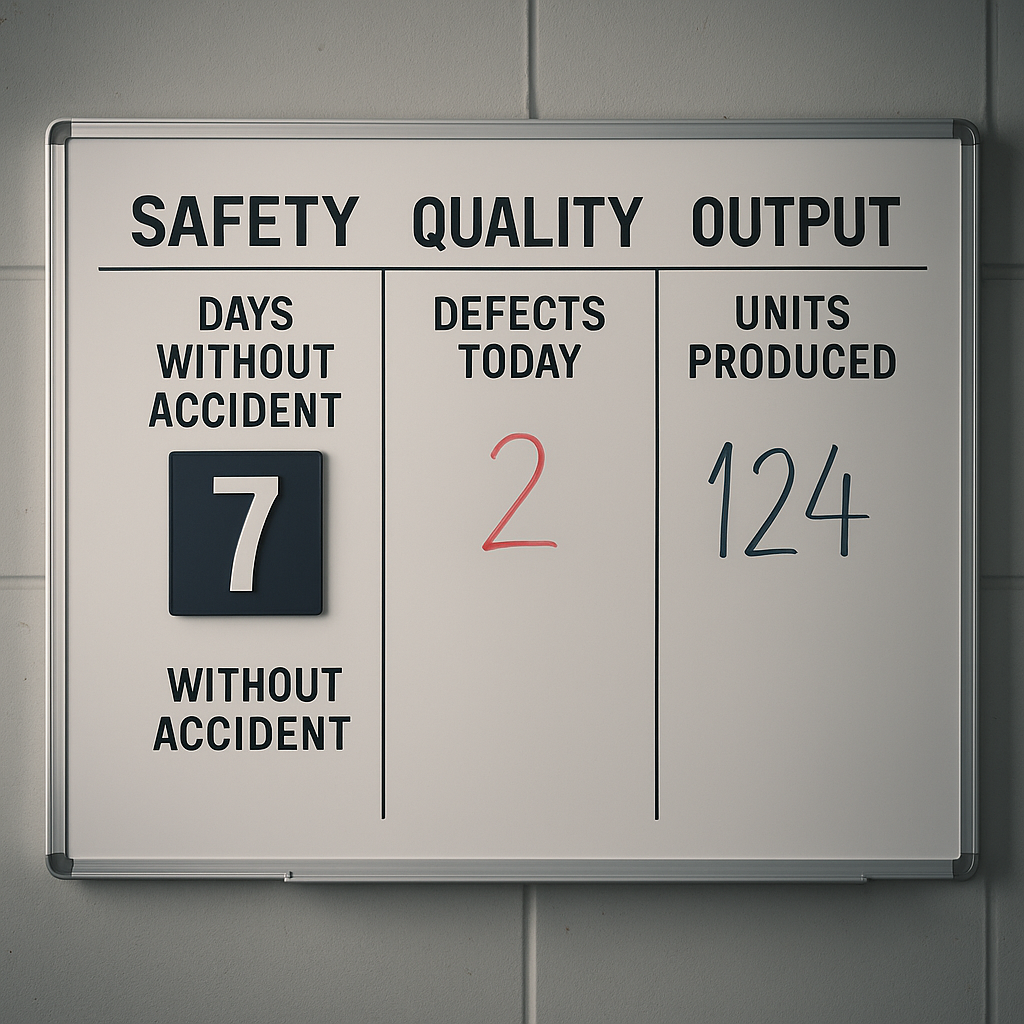Are We Winning? The Power of a Leadership Scoreboard
Have you ever been to a track meet?
A lot is happening — sprinters running, people jumping, and still others throwing objects in the distance. You want to pay attention to everything, but you can’t. The field is too big, the faces are hard to recognize, and no one is providing any information.
Now, compare that to walking into a basketball arena.
Emotion is high, the crowd is noisy, and you can feel the energy with every drum beat. Your senses come alive, your eyes are wide open, and you sense purpose — the kind of clarity every leader wishes they could build through clear leadership metrics.
What’s the score?

Why the Scoreboard Matters
That’s the power of a scoreboard — it turns chaos into clarity.
Everyone in that arena, from the players on the floor to the fans in the top row, knows exactly what’s happening and what matters most.
The scoreboard brings focus to the noise.
It tells a story — who’s ahead, who’s behind, and what has to happen next.
Businesses are no different.
Without a scoreboard, everyone’s busy. People are running hard, working long hours, and juggling priorities — but few know if their efforts are moving the team closer to a win.
When you introduce a visible, shared metric — one that everyone understands — the energy shifts.
People start caring. They start watching. They start asking questions like, ‘How can I help move the needle?’
When People See the Numbers, They Believe in the Mission
In business, 1–3 well-chosen metrics can drive an entire culture.
They provide direction without confusion. They connect departments that rarely talk. They tell every employee, “This is what matters most.”
And when those metrics are displayed — not hidden in dashboards or PowerPoints, but posted where people can see them — they become emotional.
People don’t just work for the company; they start working with the company.
That’s the difference between tracking data and building belief.

The Bombardier Story — A Metric That Became a Movement
Many years ago, I was consulting for Bombardier.
As I drove into their massive subway car manufacturing facility, something caught my eye — huge white numbers on a red background hanging from the roof. The number read “1,380.”
At first, I didn’t understand. But as I got closer, I realized what it meant:
“We’ve worked 1,380 days without an accident.”
And here’s the detail that stuck with me — those numbers weren’t digital. They were banners, changed by hand every single day.
Someone had to climb up there, remove yesterday’s number, and replace it with today’s.
Before I even entered the building, I knew what mattered to that company.
Not throughput.
Not productivity.
Safety.
And I felt it. I felt safe.
But here’s what’s truly powerful — every employee who parked their car each morning looked for that number.
They wanted to see it increase by one.
Because they knew they had a part in it.
It wasn’t just a facility win. It was a personal win.
Their actions the day before contributed to that count.
They were part of something bigger — a team goal, a culture goal, a company goal.
That daily banner didn’t just track safety performance.
It built pride, ownership, and unity.
And it costs almost nothing.
That simple scoreboard changed the way people felt walking through the door.
Why Every Company Needs a Scoreboard
Whether your metric is safety, sales, quality, or productivity, the principle is the same:
Pick it.
Display it.
Talk about it.
When you have a scoreboard, you don’t need a kick-off meeting or a motivational speech.
The scoreboard speaks for you.
It reminds people what matters most.
And when your team can see progress, they’ll push harder to keep it going. They’ll take ownership because they see their fingerprints on the results.
The scoreboard builds a connection.
It tells your people that you trust them with the truth — that you believe they can move the needle.
And guess what? They will.

Closing Thoughts on Leadership Metrics
The track meet and the basketball game are both filled with motion, but only one has focus.
That’s the difference a scoreboard makes.
A great metric doesn’t just measure performance — it creates it.
It aligns effort, builds belief, and turns everyday work into a shared pursuit of something that matters.
So the real question is simple:
When your people walk in tomorrow morning…
Will they know if you’re winning?
Related Lessons
• Leadership Vision: 5 Powerful Ways to See What Others Are Missing
• Leadership Discipline: 7 Proven Ways to Build Mental Strength






